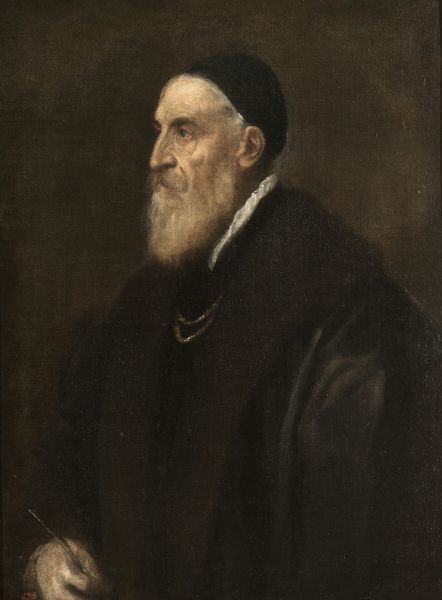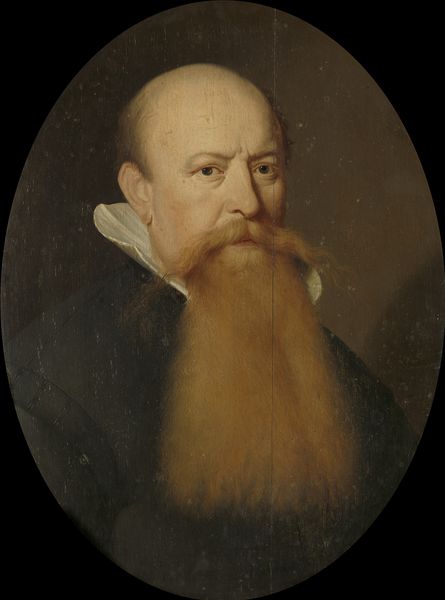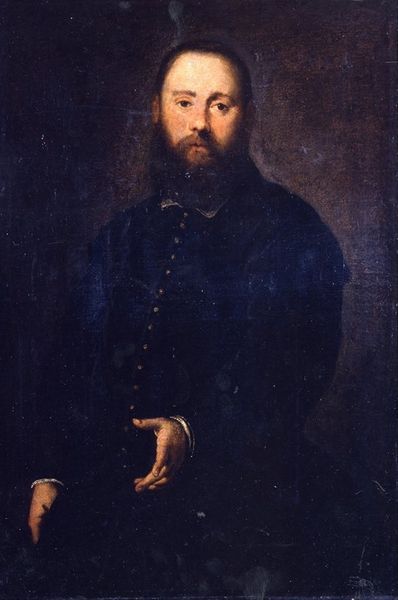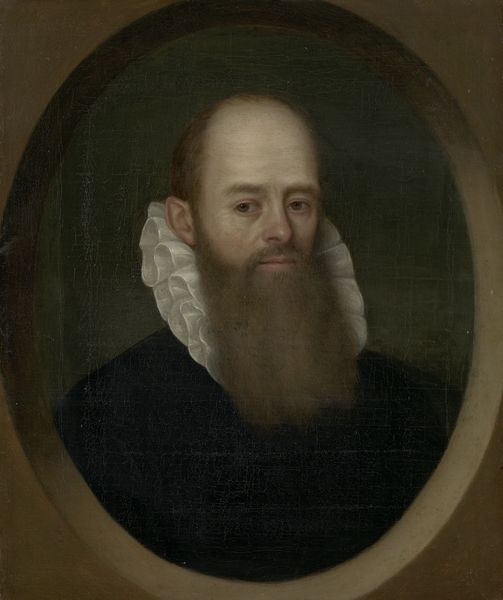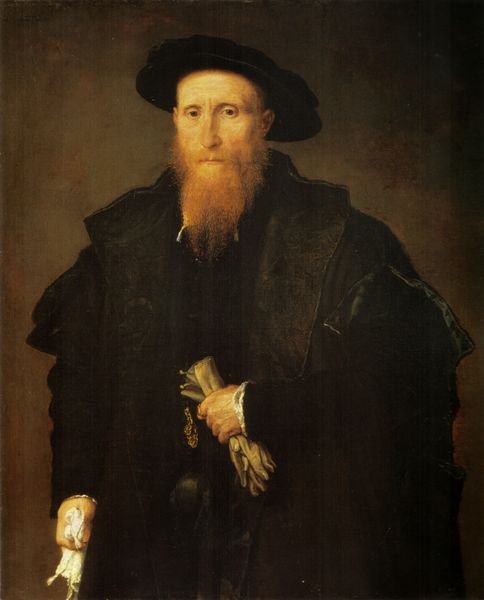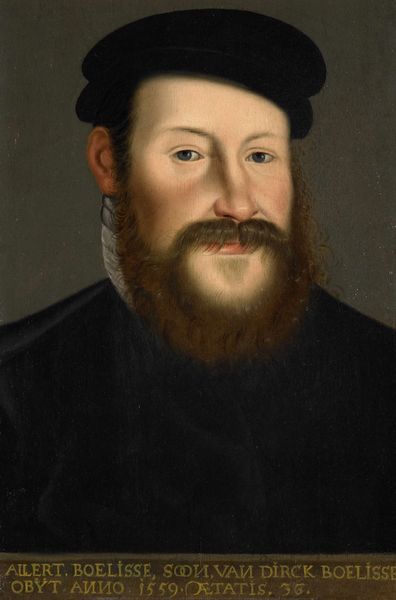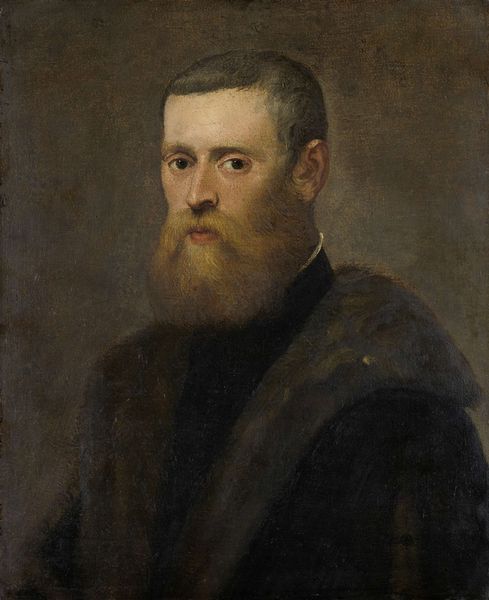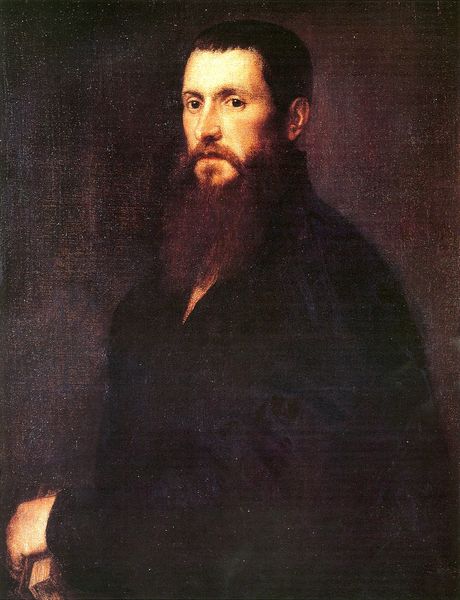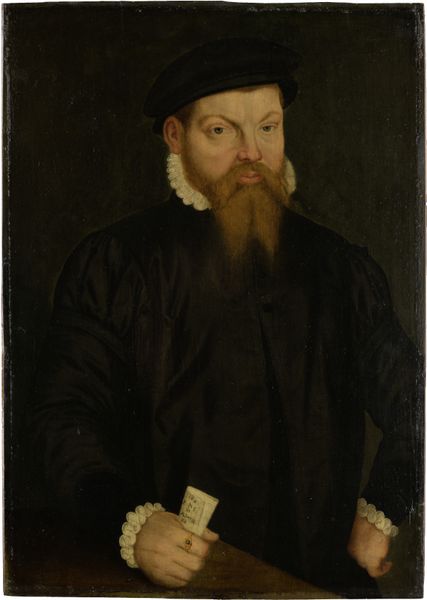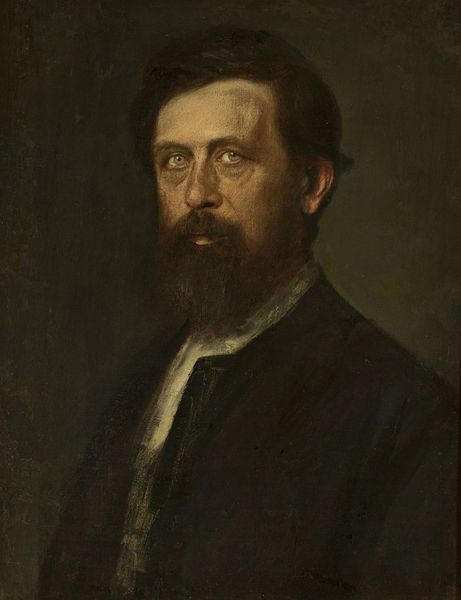
painting, oil-paint
#
portrait
#
painting
#
oil-paint
#
romanticism
#
realism
Dimensions: height 64.5 cm, width 52 cm, height 73.1 cm, width 52 cm, depth 9.8 cm
Copyright: Rijks Museum: Open Domain
Curator: Let's turn our attention to this oil painting, believed to have been created around 1850. The artwork presents a portrait of Willem Frederik Wehmeyer, an engraver active during that period. Editor: It’s striking. The muted palette, especially the somber blacks and browns, sets quite a contemplative mood. It has a feeling of deep focus to it, doesn't it? Curator: Yes, there is a quiet intensity about him, wouldn't you agree? What I find fascinating is how the work represents a fascinating intersection of Realism and Romanticism, visible especially in the minute details and also his somewhat idealized gaze. As a portrait, it plays a role in commemorating a notable figure. Editor: It really speaks to the nineteenth century’s fascination with the individual, and perhaps especially with the role and status of the artist. There’s something of a quiet rebellion in focusing on an engraver, which while certainly respected, does not get the societal standing that it arguably deserves. Curator: Certainly, the romanticised yet detailed presentation suggests a burgeoning respect for artisanal skills beyond mere commercial value. I am curious about how Wehmeyer, an engraver himself, fits into the larger story of printmaking and the democratisation of art. The painting really captures the shifting status of artisans during a period of great industrial transformation. Editor: The slight melancholic look of the subject almost hints at some struggle, or perhaps some deeper contemplation around those very transformations. Considering the potential social status Wehmeyer might have faced, what does that gaze suggest about his perceived value in Dutch society during the mid-19th century? Was this perhaps the artist's statement, of him demanding for a deserving status within Dutch society? Curator: That's an insightful consideration of it; art providing avenues for people to speak up against some long lasting oppressive behaviors and social norms. And looking at the bigger picture, portraits have consistently played a powerful role in affirming identity, reflecting the sitter's aspirations, status, and self-image to both themselves and to a broader public audience. Editor: Well, seeing this portrait in light of these intersectional aspects certainly highlights not just one man's individual image, but some subtle statement made by and to the cultural milieu of his time. Curator: Exactly! We are left reflecting on the historical narrative around artistry, industrialization, and society in the 19th Century. Editor: A poignant look into history then. Thank you.
Comments
No comments
Be the first to comment and join the conversation on the ultimate creative platform.
